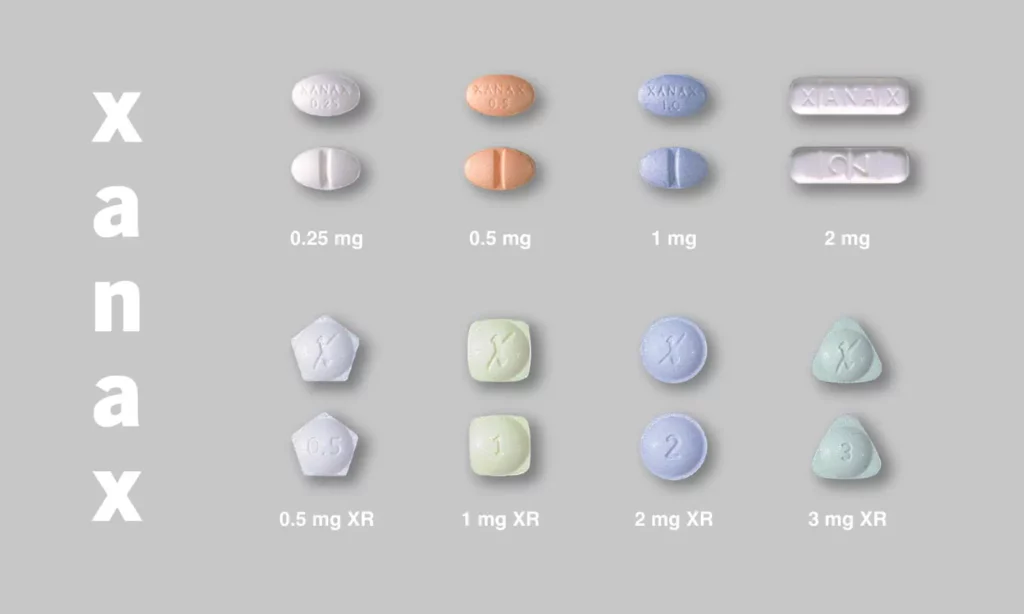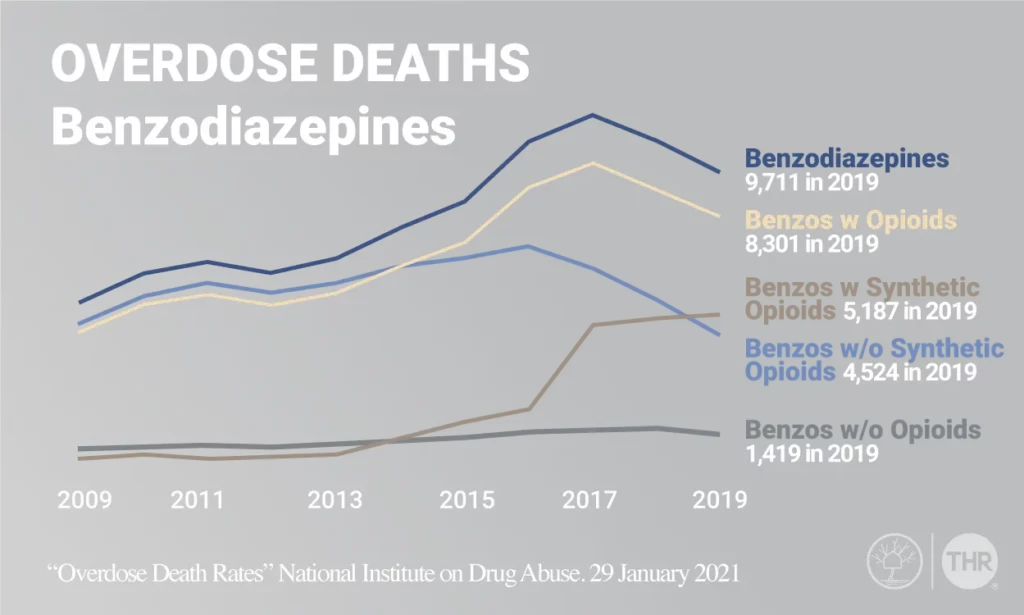Xanax Abuse and Addiction
Xanax Abuse and Addiction
Xanax is a benzodiazepine that is prescribed to treat generalized anxiety disorder (GAD), insomnia, and panic disorders. It is highly addictive when used long-term and should only be used under the supervision of a psychiatrist.
What Is Xanax?
Xanax is a prescription benzodiazepine that is typically used to treat anxiety, insomnia, and panic disorder. The drug can also be used to manage anxiety connected to depression.
Xanax works by effecting a neurotransmitter in the brain called GABA, which helps reduce anxiety and promotes relaxation. Although it can be effective for short-term relief, Xanax is a highly addictive substance that can lead to mental and physical dependence and withdrawal symptoms that make it difficult to break free from addiction.
It is important to use this medication only as directed by a psychiatrist and to seek medical assistance if you experience any adverse effects or signs of addiction. If you or a loved one is struggling with Xanax addiction, call us for support and guidance.
Xanax and other benzodiazepines are classified as Schedule IV controlled substances by the U.S. Drug Enforcement Administration. This means that they have legitimate medical uses and are available with a prescription, but they also have a potential for abuse, dependence, and addiction. It’s important to use them as directed by a healthcare provider and be careful since misuse can cause serious health problems. Seek professional help if struggling with benzodiazepine abuse or addiction.
Benzodiazepine:
Narcotic: Psychoactive Depressant (Sedative and Hypnotic).
The Origin of Xanax (Alprazolam)
Xanax, also called alprazolam, was first synthesized and created in the late 1960s by pharmaceutical company Upjohn (which is now part of Pfizer). The drug was created as a successor to Librium, an earlier benzodiazepine, to produce a more potent and effective drug for treating the symptoms of anxiety and panic disorders. Upjohn researchers sought to enhance the anxiolytic (anti-anxiety) properties of benzodiazepines, and through their efforts, alprazolam was formulated.
The U.S. Food and Drug Administration (FDA) approved Xanax in 1981, and it has become one of the most widely prescribed and abused medications in the benzodiazepine class. Its popularity in reducing the symptoms of anxiety HR has made it a commonly prescribed medication around the world. However, taking this drug requires careful monitoring due to its high potential for abuse and addiction.
Xanax Video on Benzo Abuse
Tree House addiction counselor Rob Mo explains the signs and symptoms of Xanax and Benzodiazepine abuse and withdrawal symptoms. He also talks about what to expect when entering addiction treatment for Xanax.
If you are struggling with an addiction to Xanax, call us at (720) 640-0202 now.
All calls are 100% confidential.
What Does Xanax Look Like?
Xanax is available in various forms and dosages. The most common forms of Xanax are tablets and extended-release tablets. The tablets are typically rectangular in shape and come in different colors depending on the dosage. The 0.25 mg tablets are white, the 0.5 mg tablets are peach, the 1 mg tablets are blue, and the 2 mg tablets are white, green, or yellow.
The tablets may have the letters “XANAX” imprinted on one side and the dosage strength on the other. This distinction is important because counterfeit Xanax can vary in appearance and may be visually different from genuine Xanax tablets.
Counterfeit versions of Xanax may have irregular shapes, inconsistent colors, or poor-quality imprints (blurry, smudged, or misspelled). Counterfeit Xanax’s taste and texture can differ from the genuine product.
Understanding the difference between real and fake Xanax is important because counterfeit Xanax is often mixed with fentanyl to increase its euphoric potency. However, fentanyl can be lethal with just one use.
Xanax can also be prescribed as an orally disintegrating table or as a liquid solution.

Understand What Xanax Looks Like
Use the chart above to identify pills that may be Xanax.
How Is Xanax Used?
When prescribed by a doctor, Xanax and other benzodiazepines are usually taken in one of two ways.
The most common way is orally. Ingesting the pill or tablet form allows the medication to be gradually absorbed into the body. While rare, some benzodiazepines can be administered through injection for more severe anxiety and panic attacks.
Bn benzodiazepines like Xanax can be crushed and snorted through the nose when used recreationally. Snorting Xanax provides a faster onset of the drug’s effects compared to oral ingestion. However, using benzodiazepines in this way is dangerous and can lead to serious health risks.
When Xanax is mixed with alcohol or other substances, such as opioids or methamphetamines, the risk of overdose is greatly increased. Similarly, if taken with stimulants like meth, the two drugs can counteract each other, allowing individuals to use larger quantities of each. However, it can result in a delayed overdose from the remaining drug in the system once one effects wear off.
Dangers of Xanax:
Xanax has significant risks when misused. As a central nervous system depressant, the danger of overdose when taking high doses or consuming consecutive doses before the effects of the previous dose have fully diminished is higher. However, the majority of people who experience benzodiazepine overdose are using multiple substances in combination.
Xanax/Benzodiazepine Overdose Rates:
Benzodiazepines, including Xanax, rank as the 5th leading cause of narcotic overdose cases in the United States as of 2019. The number of yearly benzodiazepine overdose cases increased by nearly 7,000 between 2013 and 2019.
It is concerning that a significant portion of benzodiazepine overdoses involve opioids, resulting in an additional 10,000 people experiencing overdose annually. Now counterfeit Xanax bought on the street is being mixed with fentanyl with deadly results.
For more information on Benzodiazepines
Benzodiazepine Overdose Graph:

Signs of Xanax Abuse
Being aware of the signs and symptoms connected with Xanax addiction can help a loved one find the help they need. It is important to understand and notice the physical and behavioral indicators and street names associated with Xanax that suggest benzodiazepine misuse to help prevent the long-lasting health consequences of addiction.
If you or someone you know is facing difficulties breaking free from Xanax addiction, our specialized Benzo addiction treatment program in Denver, Colorado, provides the necessary support to positively impact an individual working to overcome this substance use disorder.
Physical Signs of Xanax Misuse:
Xanax and other benzodiazepines are classified as hypnotic sedatives, which reduce brain activity to alleviate panic attacks, anxiety, insomnia, and seizures. Unfortunately, the drugs can lead to several physical manifestations when misused, including:
- Physical weakness
- Weight loss due to anorexia
- Confusion
- Blurred vision
- Clumsiness and lack of coordination
- Dizziness
- Drowsiness
- Difficulty breathing
- Shaking
- Headaches
Changes in Behavior
Xanax and other benzodiazepines are prescribed to reduce brain activity, inducing a sedative and calming effect to manage specific conditions. When a person misuses Xanax, they may be consuming an excessive amount of the drug and experience negative behavioral side effects associated with decreased brain activity.
Behavioral changes can occur as withdrawal symptoms manifest once the effects of Xanax wear off. Some common behavioral changes associated with Xanax misuse include:
- Impaired decision-making abilities
- Slurred speech
- Anorexia (loss of appetite)
- Insomnia
- Disturbed sleeping patterns
- Forgetfulness
- Engaging in doctor shopping (visiting multiple doctors to obtain multiple prescriptions)
Side Effects of Xanax
Benzodiazepines, including Xanax, can be a beneficial treatment option for conditions such as panic, anxiety, seizures, insomnia, and severe symptoms of alcohol withdrawal when used as prescribed by a medical professional. Benzos can help people manage these conditions and lead everyday lives when taken correctly. However, misuse of benzodiazepines can result in additional side effects. If you suspect a loved one is abusing Xanax, watch for the following potential side effects:
- Euphoria
- Calm
- Sleepiness
- Confusion
- Depression
- Memory problems
- Trouble thinking
- Headache
- Fatigue
- Drowsiness
- Slurred speech
- Lack of concentration
- Dry mouth
- Loss of coordination
- Vision impairment
Common Street Names for Xanax
Xanax, a commonly abused benzodiazepine, has acquired several street names that are often used in informal settings. Due to evolving slang, these street names can vary regionally and change over time.
Some of the commonly known street names for Xanax include “Xannies,” “Bars,” “Zanies,” “Handlebars,” “School Bus,” and “Football.”
These street names are frequently used in informal conversations or discussions related to the illicit use or acquisition of Xanax. It is essential to be aware of these terms when recognizing or addressing Xanax misuse and seeking appropriate help and support for individuals affected by its abuse.
Xanax Overdose Symptoms
If you think someone might be overdosing on benzodiazepines, call 911 right away. Acting quickly can save their life. Emergency responders can give Flumazenil medication, which helps reverse the sedative effects and get the nervous system back on track.
Some signs of a possible Xanax overdose to watch for include:
- Dizziness
- Confusion
- Drowsiness
- Blurred vision
- Slurred speech
- Difficulty breathing
- Bluish fingernails or lips
- Loss of coordination
- Tremors
- Unresponsiveness and coma
If you notice these symptoms of Xanax overdose, seek immediate medical help to ensure the best chances of recovery while minimizing the long-term health risks.
Treating Xanax Addiction Effectively:
Treating Xanax involves three phases: medical detoxification, an addiction treatment program, and aftercare.
In medical detoxification, individuals undergo a supervised process to safely manage withdrawal symptoms and rid the body of the drug. This phase ensures a stable and comfortable transition into the recovery journey.
During the second phase, the individual attends a level of care at an addiction treatment center to develop strong relapse-prevention skills through various therapeutic approaches. These treatments can include counseling, behavioral therapies, and support groups to address the underlying causes of addiction, develop coping mechanisms, and foster long-term recovery.
Aftercare is the final step in the recovery journey and focuses on helping someone stay sober and prevent relapse. This phase usually includes a personalized plan that fits the person’s unique needs and lifestyle and may include therapy, joining support groups, and developing a solid relapse prevention strategy to manage everyday stress and triggers successfully.
These three phases can help people receive comprehensive treatment for Xanax addiction, increasing their chances of achieving sustainable recovery and improving overall well-being. If you or a loved one is struggling with an addiction to Xanax, call us today.

Author
Robert Funk: Addiction Writer
It's Lifestyle Recovery
There is a Better Way to Overcome Addiction – A Health-Centered Program.
- MIND
- BODY
- SOCIAL
- https://www.ncbi.nlm.nih.gov/pmc/articles/PMC5846112/
- https://news.ohsu.edu/2022/06/02/dependence-on-xanax-similar-sedatives-lead-ohsu-physicians-to-coin-new-diagnosis
- https://www.verywellhealth.com/xanax-addiction-5087537
- https://www.healio.com/news/psychiatry/20200420/alcohol-benzodiazepine-use-significantly-associated-with-opioid-overdose-deaths
